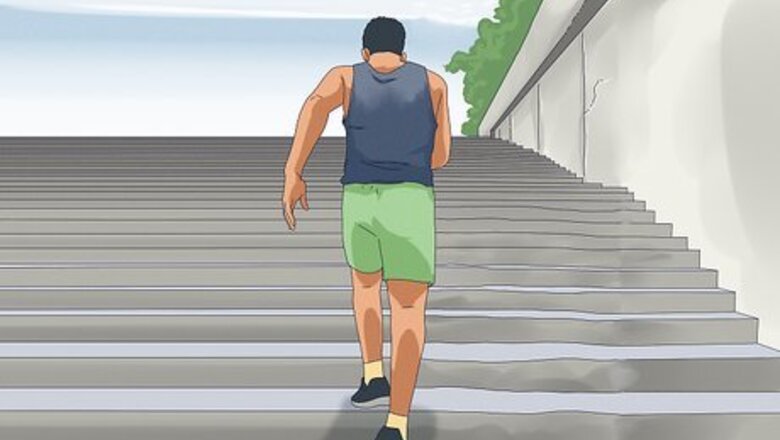
views
- The 6 components of skill-related fitness are agility, speed, balance, coordination, power, and reaction time.
- Strengthening various components of skill-related fitness makes it easier to master various athletic skills.
- Skill-related fitness is more about strengthening various skills rather than improving your overall physical health.
What is skill-related fitness?
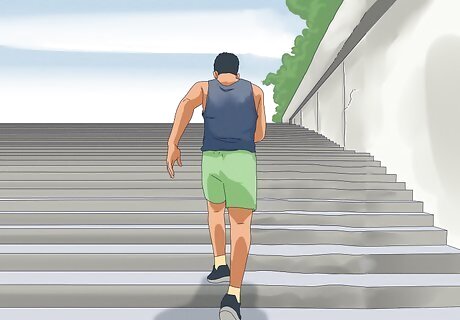
Skill-related fitness refers to abilities that help you learn athletic skills. There are 6 skill-related fitness components: agility, speed, balance, coordination, power, and reaction time. If you have highly developed skill-related fitness abilities, you’re more likely to have an easier time mastering different athletic skills. Typically, you would focus on strengthening these skills when training for a specific athletic event or sport rather than when you want to improve your overall physical health. Skill-related fitness only has an indirect connection with a person’s overall health. On the other hand, people more often use the components of health-related fitness (cardiorespiratory endurance, muscular strength, muscular endurance, flexibility, and body composition) to evaluate someone’s overall health and fitness level.
6 Components of Skill-Related Fitness
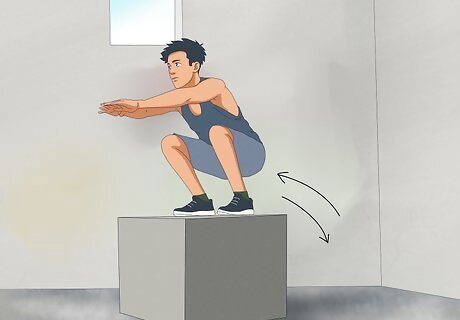
Agility Agility is your ability to move your body quickly and easily. This also includes your ability to change directions and still maintain your balance, such as when you’re running. Some sports that often require you to have high levels of agility include football, soccer, basketball, and volleyball. Examples of agility: Stepping aside quickly to avoid running into someone Quickly maneuvering a snowboard or surfboard to avoid an obstacle Stopping and changing directions to avoid getting the ball stolen from you Exercises to improve agility: Zigzag cones: Place 10 or more cones in a zigzag pattern about 3 feet (0.9 m) apart. Quickly weave between the cones moving from side to side. Do 3 repetitions. High knees ladder drill: Using an agility ladder, run with high knees through the ladder so that you touch each ladder space. Repeat for 3 sets. Box jumps: Stand in front of a box that’s around 18 in (45.7 cm) tall and jump on to it, landing on both feet. Jump back down, then immediately jump back up. Do 3 sets of 10 reps.
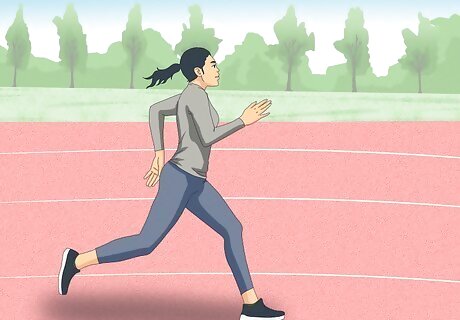
Speed Speed is your ability to move fast and perform a certain movement in a short amount of time. There are many kinds of speed you might focus on depending on what sport you play or what activity you want to do, such as running speed, swimming speed, and hand or foot speed. Examples of speed: Running fast to catch a baseball Swinging a tennis racket quickly to hit the ball Jumping up quickly to hit the basketball during tipoff Exercises to improve speed: Strength training: In order to be fast, you need to build up the muscles in your arms, calves, ankles, and hips. Do burpees, squat jumps, and weight-lifting to strengthen these muscle groups. Sprinting: Run as fast as you can for a short interval, rest until your heart rate goes back down, then repeat. Intervals can range anywhere from 40 to 400 m (131 to 1,312 ft) depending on your goal.
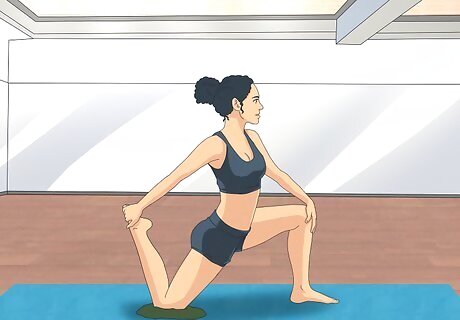
Balance Having good balance means being able to maintain your center of gravity when moving or standing still. This is also your ability to exert control over the various parts of your body and their movements. Balance is key not only in sports but also in everyday life, such as when you walk or sit. It’s also an important skill for older people to maintain to prevent falls. Examples of balance: Being able to walk in a straight line without veering to the side Standing up from sitting in a chair without using your hands for support Landing on both feet after jumping Exercises to improve balance: Yoga: Doing yoga improves your balance by having you hold certain poses for extended periods of time. Yoga also improves your flexibility, which is crucial in strengthening balance. Lunges: When you do lunges, it’s important to concentrate on maintaining your center of gravity to avoid falling forward or to the side. Lunges will improve your balance by strengthening your hip flexors and abdominal muscles. Single leg balance: Stand on one leg and raise your opposite arm above your head. Hold this position for as long as you can, rest, then repeat. Tighten your core to improve your balance.
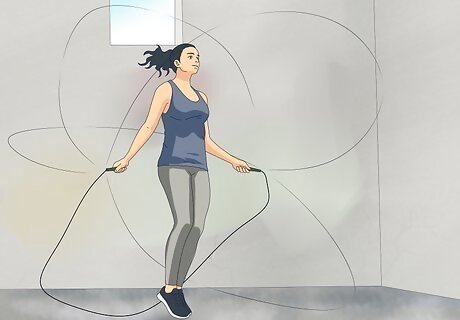
Coordination This is your ability to pull off multiple maneuvers at once. This includes hand-eye coordination, or the ability to do activities that require you to use your hands and eyes simultaneously. This skill is important in a lot of sports where you usually have to coordinate running, catching, throwing, and other movements all at once. Examples of coordination: Catching a frisbee while running Dribbling a ball while moving Jumping and hitting a ball Exercises to improve coordination: Playing catch: To help strengthen your hand-eye coordination, grab a friend or family member and take turns throwing and catching a ball. Or if you’re alone, practice catching by throwing a ball against a wall. Jump rope: Doing jump rope is a good exercise to improve the coordination between your eyes, hands, and feet. Juggling: For a more fun and unique exercise, try your hand at juggling things like balls or scarves to improve your hand-eye coordination.
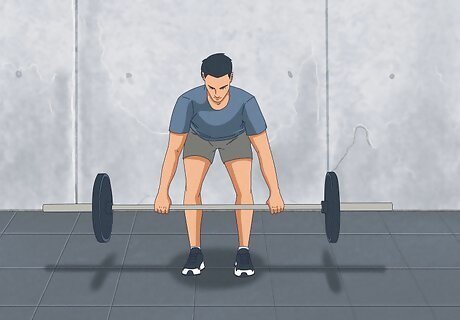
Power This is the amount of force your body is able to exert when you perform a certain movement. Many people think of power as a combination of strength and speed since it’s usually defined within fitness as the ability to overcome resistance in the shortest amount of time. Examples of power: Doing the shot put in track and field Jumping vertically to hit a volleyball Throwing a baseball at a high speed Exercises to improve power: Kettlebell swings: Performing kettlebell swings builds power in your hips and upper body by combining strength training with a fast and explosive movement. Jump squats: When you do jump squats, you’re building up lots of muscle and strength in your lower body. This exercise helps train your legs to distribute power through the rest of your body when you jump up. Weight training: Lift dumbbells, use weight machines, or add weights when you do things like squats, burpees, or pushups to create resistance and increase your power.
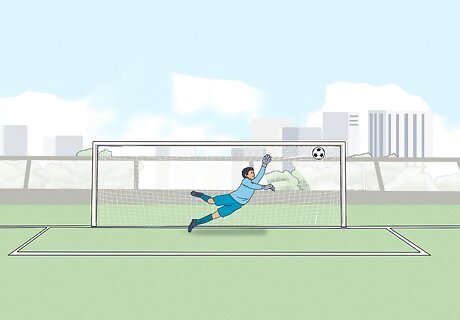
Reaction time Your reaction time is the amount of time it takes for your body to recognize an outside stimulus and react to it through some kind of movement. This is an important skill to develop not only for sports but also for everyday occurrences. For example, you need a short reaction time to move your foot from the accelerator to the brake pedal in your car when another car suddenly stops in front of you to prevent an accident. Examples of reaction time: Catching a ball when someone throws it to you suddenly Swerving out of the way when something suddenly appears in your path Sprinting as soon as you hear the start pistol in a race Exercises to improve reaction time: Goal-keeping: Stand in front of a soccer goal and have others try to kick or roll a ball into the goal. React quickly to stop the ball from going into the goal. Ball drop: Have someone drop a ball at shoulder height. Your job is to catch the ball after it bounces once on the floor but before it can bounce a second time. Video games: While this might not be what you consider to be a standard form of exercise, playing video games that involve a lot of action or puzzles that require you to think quickly can help you improve your reaction time.
Skill-Related Fitness vs. Health-Related Fitness
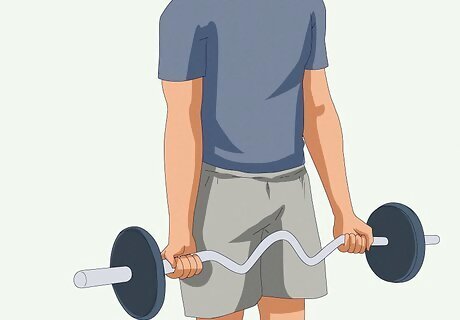
Health-related fitness relates to overall physical fitness. Whereas you might strengthen the various components of skill-related fitness to improve your performance, improving the 5 health-related fitness components helps get your body in shape. Strengthening the components of health-related fitness is also beneficial in preventing diseases and other health complications. The 5 components of health-related fitness are: Muscular strength: The amount of force your muscles can exert or how much weight they can support. Exercises that will improve muscular strength include lifting weights, cycling, and climbing stairs. Muscular endurance: The ability of your muscles to perform a certain exercise for a given amount of time. Exercises that build up endurance include planks, push-ups, and squats. Cardiovascular endurance: Your heart’s and lung’s abilities to absorb, transport, and use oxygen while you exercise for an extended period of time. Running, swimming, and dancing are all exercises that will strengthen your cardiovascular endurance. Flexibility: Your ability to move your joints and muscles through a full range of motion. Things like yoga, tai chi, and pilates will help improve your flexibility. Body composition: The ratio of muscle to fat in your body. Resistance training to increase lean body mass combined with a nutrient-rich diet is key to achieving a healthy body composition with a higher percentage of muscle mass and a lower percentage of body fat.
















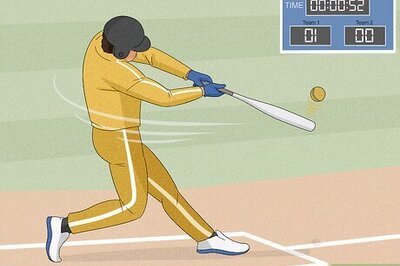



Comments
0 comment